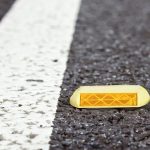Overview
Introduction to portable speed bumps
Portable speed bumps are an effective solution for traffic control in various situations. These speed bumps can be easily transported and installed in different locations, making them highly versatile. They are typically made of durable materials such as rubber or plastic, which allows them to withstand heavy traffic and adverse weather conditions. Portable speed bumps are designed to slow down vehicles and improve safety by alerting drivers to reduce their speed. They are commonly used in construction zones, school zones, parking lots, and other areas where temporary traffic control is required. With their flexibility and convenience, portable speed bumps offer numerous advantages in managing and regulating traffic flow.
Importance of traffic control
Traffic control plays a crucial role in ensuring the safety and efficiency of our roadways. With the increasing number of vehicles on the roads, it is essential to have effective measures in place to regulate traffic flow and minimize congestion. One of the key advantages of using portable speed bumps for traffic control is their versatility. Unlike traditional speed bumps that are fixed in place, portable speed bumps can be easily installed and removed as needed. This flexibility allows traffic authorities to strategically place speed bumps in areas where there is a need for reduced speed, such as school zones or construction sites. Additionally, portable speed bump are highly visible, making them effective in alerting drivers to slow down and proceed with caution. By implementing portable speed bumps as part of traffic control measures, we can enhance road safety and create a smoother and more organized flow of traffic.
Purpose of the article
The purpose of this article is to discuss the advantages of using portable speed bumps for traffic control. Portable speed bumps are an effective solution for managing and controlling traffic in various situations. They can be easily installed and removed as needed, making them a flexible option for temporary traffic control. Additionally, portable speed bumps are highly visible, alerting drivers to reduce their speed and ensuring the safety of pedestrians and other road users. This article aims to highlight the benefits of using portable speed bumps and promote their implementation for efficient traffic management.
Advantages of Portable Speed Bumps
Enhanced safety for pedestrians
Portable speed bumps offer enhanced safety for pedestrians by effectively slowing down vehicle speeds in areas with high foot traffic. These speed bumps are designed to be easily installed and removed, making them a flexible solution for temporary traffic control. By reducing vehicle speeds, portable speed bumps help to prevent accidents and improve pedestrian safety. They are particularly useful in areas such as school zones, construction sites, and event venues where pedestrian safety is a top priority. With their bright colors and reflective markings, portable speed bumps also provide increased visibility, further alerting drivers to slow down and prioritize the safety of pedestrians.
Effective traffic calming solution
Portable speed bumps are an effective traffic calming solution that offers numerous advantages. These speed bumps can be easily installed and removed as needed, making them a flexible option for controlling traffic. They are also highly visible, alerting drivers to slow down and be cautious. Portable speed bumps are particularly useful in temporary situations, such as construction zones or events, where traffic needs to be controlled temporarily. Additionally, they are cost-effective compared to permanent speed bumps and do not require extensive construction work. Overall, portable speed bumps provide a convenient and efficient way to control traffic and ensure road safety.
Easy installation and removal
Portable speed bumps offer the advantage of easy installation and removal. Unlike traditional speed bumps that require extensive construction work, portable speed bumps can be easily placed on the road surface without any major modifications. This makes them a convenient option for temporary traffic control situations or events. Additionally, the ability to remove them quickly and without leaving any permanent marks on the road surface allows for flexibility in adjusting traffic flow as needed. The ease of installation and removal of portable speed bumps makes them a cost-effective and efficient solution for traffic control.
Cost-effectiveness
Affordable alternative to permanent speed bumps
Portable speed bumps offer an affordable alternative to permanent speed bumps for traffic control. Unlike permanent speed bumps, which require significant construction and installation costs, portable speed bumps can be easily deployed and removed as needed. This flexibility allows for cost-effective traffic control solutions in areas where permanent speed bumps may not be feasible or necessary. Additionally, portable speed bumps can be used in temporary situations, such as construction zones or events, providing a temporary solution for traffic calming. Overall, portable speed bumps provide an affordable and versatile option for traffic control, offering the benefits of speed reduction without the high costs and permanence of traditional speed bumps.
Reduced maintenance costs
One of the key advantages of using portable speed bumps for traffic control is the reduced maintenance costs. Unlike traditional speed bumps that are permanently installed on the road, portable speed bumps can be easily removed and relocated as needed. This means that maintenance and repair work can be done more efficiently and cost-effectively. Additionally, portable speed bumps are typically made of durable materials that require minimal upkeep, further reducing maintenance costs in the long run. Overall, the use of portable speed bumps can help save money on maintenance expenses while still effectively controlling traffic speed.
Flexibility in deployment
Portable speed bumps offer a high level of flexibility in their deployment for traffic control. Unlike traditional speed bumps that are permanently installed on the road, portable speed bumps can be easily transported and placed in different locations as needed. This allows traffic control authorities to quickly and efficiently respond to changing traffic patterns or temporary events such as construction zones or special events. The ability to easily move and adjust the placement of portable speed bumps makes them a versatile tool for maintaining safe and controlled traffic flow in various situations.
Versatility and Adaptability
Suitable for various road conditions
Portable speed bumps are designed to be versatile and can be used on various road conditions. Whether it is a residential street, a construction site, or a temporary event location, portable speed bumps can effectively control traffic and ensure the safety of both drivers and pedestrians. These speed bumps are made of durable materials that can withstand different weather conditions, making them suitable for use in both hot and cold climates. Additionally, they can be easily installed and removed, allowing for flexibility in their placement and usage. Overall, portable speed bumps offer a convenient and efficient solution for traffic control in different road conditions.
Temporary traffic control for events
Temporary traffic control for events is a crucial aspect of ensuring the safety and efficiency of traffic flow. Portable speed bumps offer a convenient solution for controlling traffic during events such as concerts, festivals, and sporting events. These speed bumps can be easily installed and removed as needed, making them ideal for temporary traffic control. By strategically placing portable speed bumps in designated areas, event organizers can effectively slow down vehicles and create a safer environment for pedestrians and participants. Additionally, portable speed bumps are highly visible and can be customized with reflective markings, further enhancing their effectiveness in directing and managing traffic. Overall, the use of portable speed bumps for temporary traffic control during events provides numerous advantages in terms of safety, convenience, and effectiveness.
Adjustable speed limit enforcement
One of the key advantages of using portable speed bumps for traffic control is the ability to enforce adjustable speed limits. Unlike traditional speed bumps that are fixed and permanent, portable speed bumps can be easily installed and removed as needed. This flexibility allows traffic authorities to adjust the speed limit enforcement based on the specific conditions of the road or area. For example, during peak traffic hours, a lower speed limit can be enforced to ensure the safety of pedestrians and vehicles. On the other hand, during less congested times, a higher speed limit can be allowed to facilitate smoother traffic flow. This dynamic enforcement of speed limits helps to improve overall road safety and efficiency.
Eco-friendly Solution
Reduced carbon footprint
Portable speed bumps offer the advantage of reducing carbon footprint in traffic control. Unlike traditional speed bumps that are permanently installed on the road, portable speed bumps can be easily moved and repositioned as needed. This flexibility allows traffic authorities to effectively manage traffic flow without the need for extensive construction and road modifications. By minimizing the use of heavy machinery and materials, portable speed bumps help in reducing carbon emissions associated with road maintenance and construction. Additionally, the portability of these speed bumps enables their use in temporary traffic control situations, such as construction zones or event venues, further contributing to the reduction of carbon footprint.
Recyclable materials
One of the major advantages of using portable speed bumps for traffic control is that they are made from recyclable materials. These speed bumps are often constructed using high-quality rubber or plastic, which can be easily recycled and reused. By opting for portable speed bumps made from recyclable materials, we can contribute to reducing waste and promoting a more sustainable environment. Additionally, the use of recyclable materials also helps to save valuable resources and energy that would otherwise be required to produce new speed bumps. Overall, choosing portable speed bumps made from recyclable materials is a smart and eco-friendly choice for effective traffic control.
Minimal impact on the environment
Portable speed bumps offer several advantages when it comes to minimizing their impact on the environment. Firstly, these speed bumps are made from recycled materials, reducing the need for new resources and minimizing waste. Additionally, they can be easily transported and installed without the need for heavy machinery, reducing carbon emissions. Furthermore, portable speed bumps are designed to be temporary, allowing for flexibility in their placement and reducing the need for permanent infrastructure. Overall, the use of portable speed bumps for traffic control provides an eco-friendly solution that helps to protect the environment.
Conclusion
Summary of the advantages
Portable speed bumps offer several advantages for traffic control. Firstly, they are easy to install and remove, making them a flexible solution for temporary traffic management. Secondly, they can be used in various locations, such as construction zones, school zones, and event areas, providing effective speed reduction wherever needed. Additionally, portable speed bumps are cost-effective compared to permanent speed bumps, as they do not require extensive construction or maintenance. Moreover, they can be easily transported and stored, allowing for convenient deployment whenever necessary. Overall, the use of portable speed bumps enhances safety on the roads and improves traffic flow in a practical and efficient manner.
Recommendation for using portable speed bumps
Based on the advantages discussed above, it is highly recommended to use portable speed bumps for traffic control. These speed bumps offer a flexible and cost-effective solution to manage vehicle speed and enhance safety on roads. They can be easily installed and removed as needed, making them suitable for temporary traffic control situations. Additionally, portable speed bumps are durable and weather-resistant, ensuring long-lasting performance. By implementing portable speed bumps, authorities can effectively reduce speeding and promote a safer driving environment for both motorists and pedestrians.
Future potential and development
The future potential and development of portable speed bumps for traffic control are promising. As technology continues to advance, these portable speed bumps can be further enhanced with features such as built-in sensors and smart connectivity. This would allow for real-time monitoring of traffic conditions and the ability to adjust the speed bumps accordingly. Additionally, advancements in materials and manufacturing processes can lead to the development of more durable and cost-effective portable speed bumps. With the increasing need for effective traffic control measures, the demand for portable speed bumps is likely to grow. As a result, further research and development in this area can lead to innovative solutions that improve road safety and traffic management.







